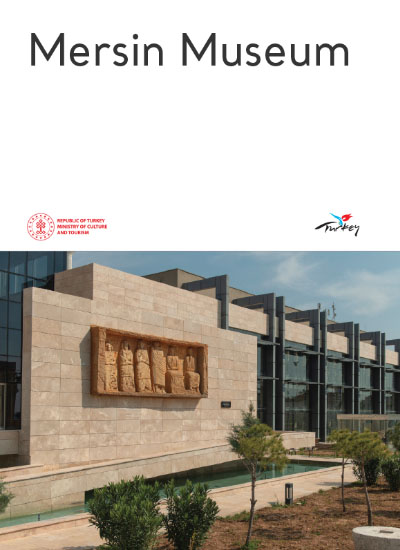Opened in 2017, the new building of the Mersin Museum functions as a cultural complex with units such as children's playgrounds, a conference hall, a library, a cafe and a sales unit, where visitors can enjoy a journey through history. The museum tour starts with the "Time Tunnel" theme, which covers the period from the Paleolithic to the Republican era, and continues with the Fossils Section, where Mersin's geological heritage areas and some samples are displayed. The Neolithic Revolution, agriculture, the first villages, the Fertile Crescent, Çukurova's relationship with northern Syria and the first settlements in the region are summarised on the information panels on the ground floor under the theme "Neolithic: A New Era in Human History". In the diaroma "A Morning in Neolithic Çukurova", the traces of the primitive agricultural order are explained with pictures and artefacts with reference to the Neolithic excavations of Yumuktepe and Gözlükule. In the Bronze and Early Iron Age Hall, the ancient region of Cilicia is presented through maps, images, texts and archaeological artefacts. The Roman exhibition includes artefacts such as jewellery, bracelets and a drawing of a rich Cilician woman reflecting Roman clothing and accessories behind the display case. Again on this floor, the production stages of olive oil are reflected to the audience with a re-enactment of the olive oil workshop. In addition, fish, amphorae and the cargo of a sunken ship, displayed in small glazed windows in the form of water droplets, leave a pleasant impression on the visitors. The burial customs of the Cilicia region are depicted with different types of sarcophagi, visuals and finds from the rescue excavations carried out by the museum directorate. In the hall where ethnographic artefacts are exhibited, the stories of the cultures that settled in Mersin and its surroundings from the Middle Ages to the present day are included. A short documentary on the Sarıkeçili Nomads, known to have lived in the Taurus Mountains since the 14th century, is presented to the visitors. In the coin section, the interactive presentation of the Goddess Tyche speaking on a coin continues to amaze the audience. In the section introducing the archaeological excavations carried out in the region, the "Chalcolithic Period" artefacts of Yumuktepe Mound, which is located on the southern coast of Ancient Cilicia and today in the city centre of Mersin, known to have been inhabited continuously from 9000 years ago to the present day, and the "Basket Women's Tomb" as it was unearthed during the excavation are exhibited. After the archaeobotanical showcases displaying agricultural products of the Neolithic and Chalcolithic Periods, artefacts from the ancient city of Soli-Pompeiopolis and the ancient city of Elaiussa-Sebaste are exhibited. The ancient city of Soli-Pompeiopolis in Mezitli District was inhabited from the 3rd millennium BC until the end of the 6th century AD. The ancient city of Elaiussa-Sebaste in Erdemli District was inhabited from the 4th century BC to the present day and was famous for olive oil trade in ancient times. In this section, the amphora firing furnace, amphorae and other finds are exhibited. Furthermore, the universe and constellations are also introduced with the narration of the famous poet and astronomer Aratos, who lived in Soli-Pompeiopolis between 315 - 245 BC.
MERSİN MUSEUM


